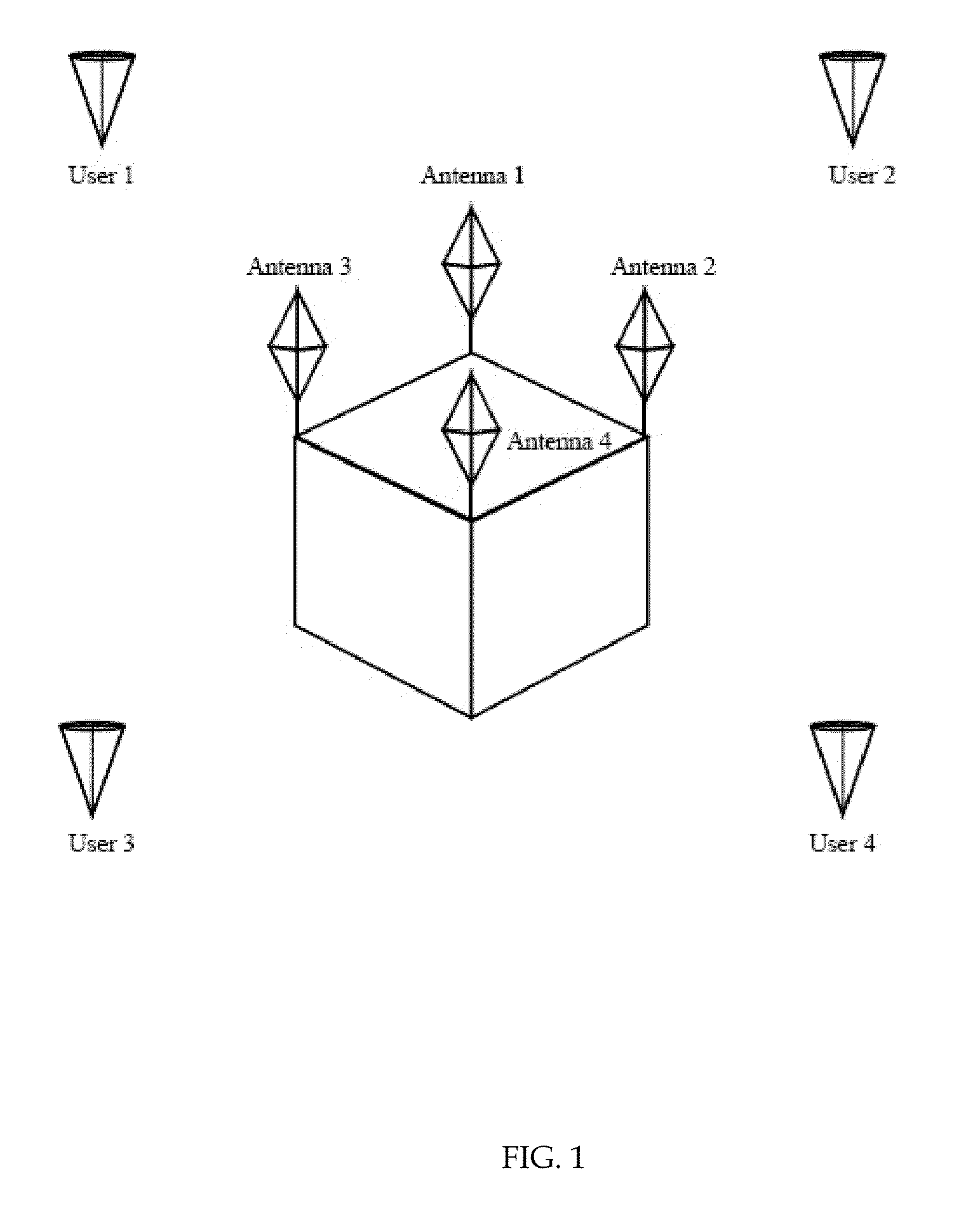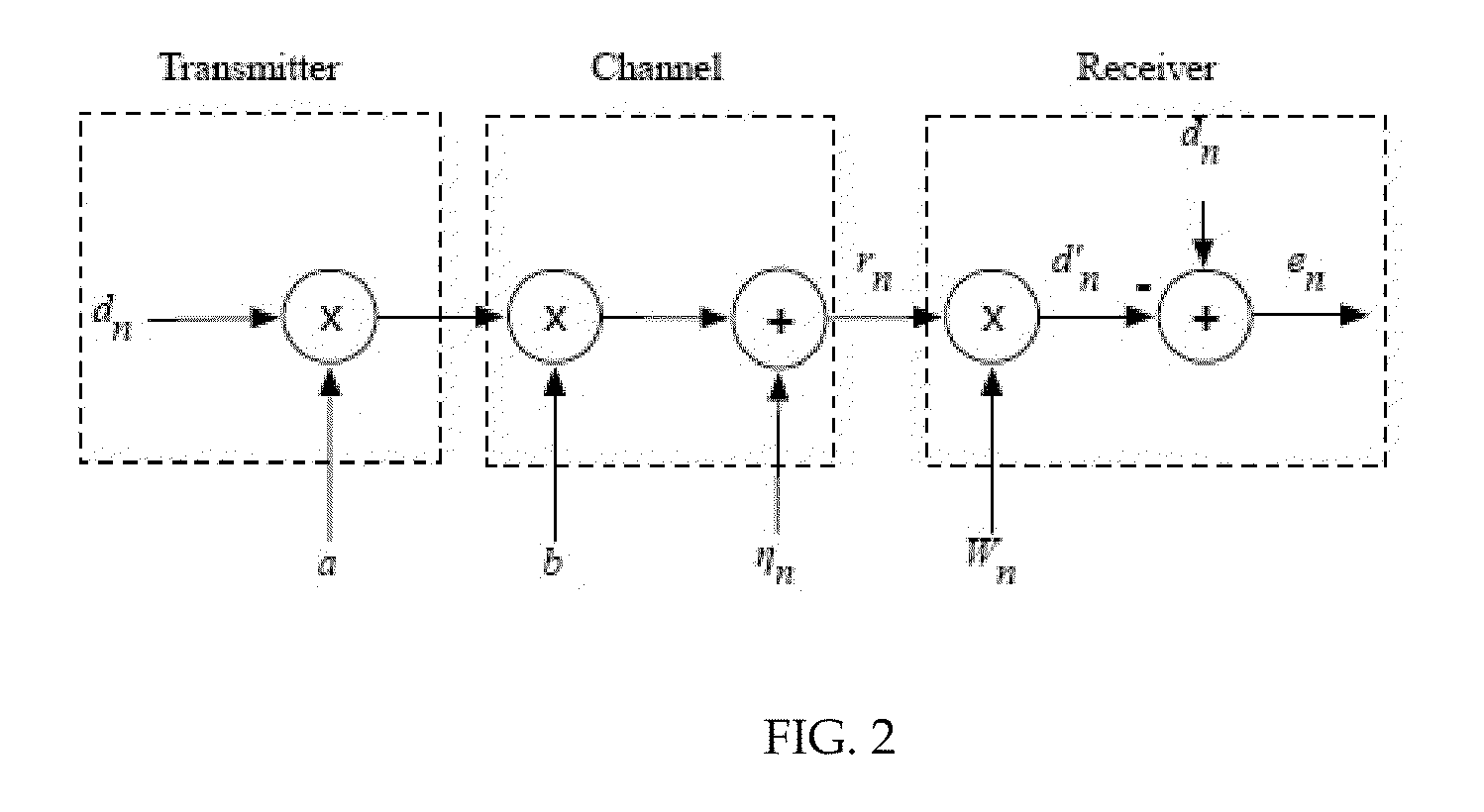Joint communication and electromagnetic optimization of a multiple-input multiple-output ultra wideband base station antenna
a base station antenna and electromagnetic optimization technology, applied in antennas, transmission, modulation, etc., can solve the problems of station antennas, noise and interference will be correlated, and the optimum placement of antennas is seen as a highly non-linear problem, so as to improve the apparent electromagnetic and communication size of the antenna, improve the practical effect, and optimize the placement of the antenna
- Summary
- Abstract
- Description
- Claims
- Application Information
AI Technical Summary
Benefits of technology
Problems solved by technology
Method used
Image
Examples
example
[0188]One example of the MIMO system has three antennas, seven users, and a spread spectrum factor of 3.
[0189]First, the antennas of each individual are constrained within a sphere of 2 symbol wavelength (WL), centered at the origin of the coordinate system. Prior to GA adaptation, 100 individuals are randomly generated, i.e. the locations of the antennas randomly generated, subjected to the constraint. Fifty random 7-user locations were also simulated. All the users are located on a circle with 40 WL radius, and 25 WL below the origin (Z coordinates of the users are all −25 WL).
[0190]The SINRs obtained by LMS algorithm were used as the fitness function for the GA algorithm. Each generation of GA adaptation, 10 survivors are selected based on a stochastic universal sampling scheme, so as to ensuring the diversity of survived genes and to achieve fast convergence.
[0191]The new population was generated from the 10 survivors with a crossover probability of 25% and an exponentially deca...
PUM
 Login to View More
Login to View More Abstract
Description
Claims
Application Information
 Login to View More
Login to View More - Generate Ideas
- Intellectual Property
- Life Sciences
- Materials
- Tech Scout
- Unparalleled Data Quality
- Higher Quality Content
- 60% Fewer Hallucinations
Browse by: Latest US Patents, China's latest patents, Technical Efficacy Thesaurus, Application Domain, Technology Topic, Popular Technical Reports.
© 2025 PatSnap. All rights reserved.Legal|Privacy policy|Modern Slavery Act Transparency Statement|Sitemap|About US| Contact US: help@patsnap.com



